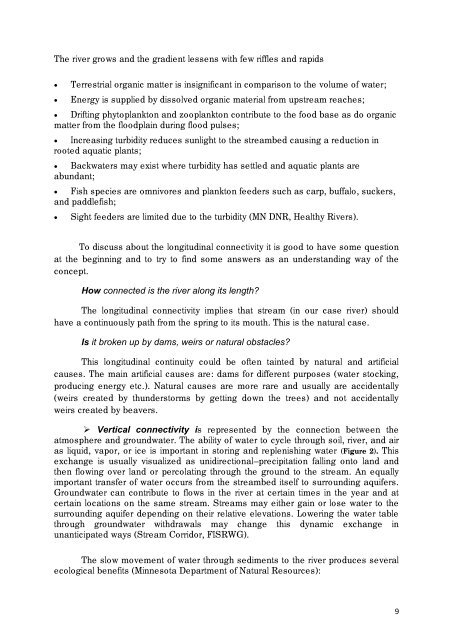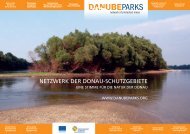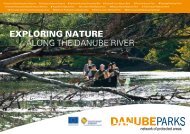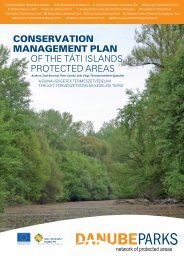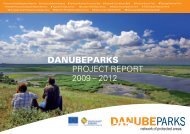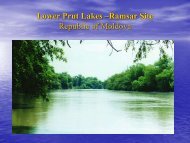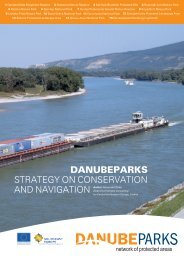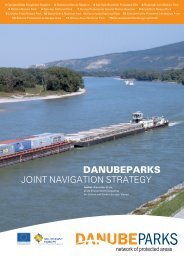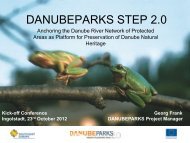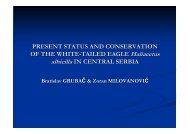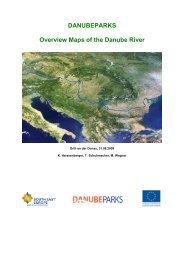Danube Rivers Morphology and Revitalization - DANUBEPARKS
Danube Rivers Morphology and Revitalization - DANUBEPARKS
Danube Rivers Morphology and Revitalization - DANUBEPARKS
Create successful ePaper yourself
Turn your PDF publications into a flip-book with our unique Google optimized e-Paper software.
The river grows <strong>and</strong> the gradient lessens with few riffles <strong>and</strong> rapidsTerrestrial organic matter is insignificant in comparison to the volume of water;Energy is supplied by dissolved organic material from upstream reaches; Drifting phytoplankton <strong>and</strong> zooplankton contribute to the food base as do organicmatter from the floodplain during flood pulses; Increasing turbidity reduces sunlight to the streambed causing a reduction inrooted aquatic plants; Backwaters may exist where turbidity has settled <strong>and</strong> aquatic plants areabundant; Fish species are omnivores <strong>and</strong> plankton feeders such as carp, buffalo, suckers,<strong>and</strong> paddlefish;Sight feeders are limited due to the turbidity (MN DNR, Healthy <strong>Rivers</strong>).To discuss about the longitudinal connectivity it is good to have some questionat the beginning <strong>and</strong> to try to find some answers as an underst<strong>and</strong>ing way of theconcept.How connected is the river along its length?The longitudinal connectivity implies that stream (in our case river) shouldhave a continuously path from the spring to its mouth. This is the natural case.Is it broken up by dams, weirs or natural obstacles?This longitudinal continuity could be often tainted by natural <strong>and</strong> artificialcauses. The main artificial causes are: dams for different purposes (water stocking,producing energy etc.). Natural causes are more rare <strong>and</strong> usually are accidentally(weirs created by thunderstorms by getting down the trees) <strong>and</strong> not accidentallyweirs created by beavers. Vertical connectivity is represented by the connection between theatmosphere <strong>and</strong> groundwater. The ability of water to cycle through soil, river, <strong>and</strong> airas liquid, vapor, or ice is important in storing <strong>and</strong> replenishing water (Figure 2). Thisexchange is usually visualized as unidirectional–precipitation falling onto l<strong>and</strong> <strong>and</strong>then flowing over l<strong>and</strong> or percolating through the ground to the stream. An equallyimportant transfer of water occurs from the streambed itself to surrounding aquifers.Groundwater can contribute to flows in the river at certain times in the year <strong>and</strong> atcertain locations on the same stream. Streams may either gain or lose water to thesurrounding aquifer depending on their relative elevations. Lowering the water tablethrough groundwater withdrawals may change this dynamic exchange inunanticipated ways (Stream Corridor, FISRWG).The slow movement of water through sediments to the river produces severalecological benefits (Minnesota Department of Natural Resources):


